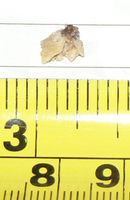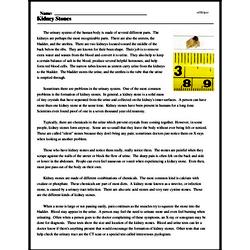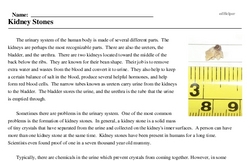Kidney Stones
The urinary system of the human body is made of several different parts. The kidneys are perhaps the most recognizable parts. There are also the ureters, the bladder, and the urethra. There are two kidneys located toward the middle of the back below the ribs. They are known for their bean shape. Their job is to remove extra water and wastes from the blood and convert it to urine. They also help to keep a certain balance of salt in the blood, produce several helpful hormones, and help form red blood cells. The narrow tubes known as ureters carry urine from the kidneys to the bladder. The bladder stores the urine, and the urethra is the tube that the urine is emptied through.
Sometimes there are problems in the urinary system. One of the most common problems is the formation of kidney stones. In general, a kidney stone is a solid mass of tiny crystals that have separated from the urine and collected on the kidney's inner surfaces. A person can have more than one kidney stone at the same time. Kidney stones have been present in humans for a long time. Scientists even found proof of one in a seven thousand year old mummy.
Typically, there are chemicals in the urine which prevent crystals from coming together. However, in some people, kidney stones form anyway. Some are so small that they leave the body without ever being felt or noticed. These are called "silent" stones because they don't bring any pain; sometimes doctors just notice them on X-rays when looking at another problem.




